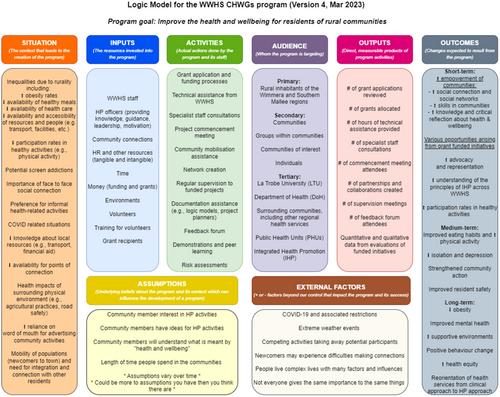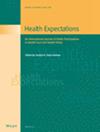Microgrants for health promotion have the potential to engage communities in designing and implementing place-based interventions to improve health and social outcomes. However, the evidence base around microgrants for health promotion is limited. This study presents the evaluation of a health service-funded microgrant program for health promotion in rural Australia.
The evaluation framework was developed through a participatory approach and involved collaborative logic model building and co-prioritized evaluation questions with health service staff and grant recipients. Evaluation questions focused on participation, short-term outcomes, and the perceived value of program activities. Qualitative methods (reflexive thematic analysis) were used to answer the evaluation questions. Data sources included semi-structured interviews with grantees (n = 11) and the health service's health promotion team (n = 4), electronic field notes kept by the health promotion team (n = 50 documents), electronic progress reports completed by grantees (n = 6) and information and feedback forums (n = 2).
Since the program's inception in 2019, the health service has received 22 grant applications of which 15 were approved and 14 disbursed. Evaluation results show that grantees were community members with multiple roles, often with previous experience in applying for grants. Expected outcomes have been partially met, especially with regard to the program's aim of community empowerment. The most notable impact was the enhancement of participants' perception of and relationship with the health promotion team, as well as the creation of opportunities for community members such as exposure to art and bridging of social groups.
Microgrants represent a feasible way to increase health opportunities and foster community participation in the planning and delivery of health promotion programs. The key program activities identified and suggested improvements can help guide program replication and adaptation by other small organizations.
Community members who had previously received a health service grant were invited to participate in collaborative workshops and follow-up surveys to codesign the grant program evaluation framework, co-prioritize evaluation questions and guide the results' dissemination plan.



